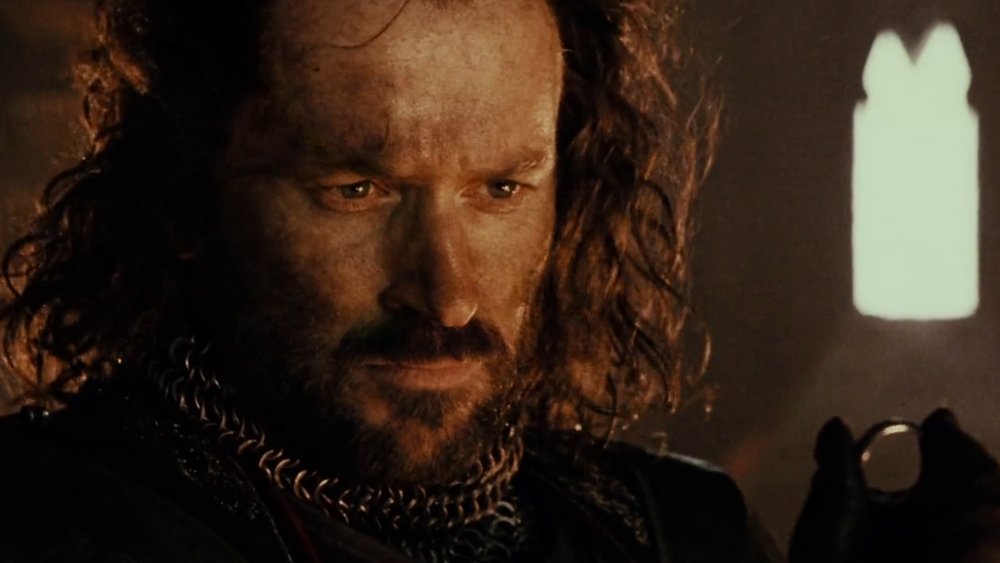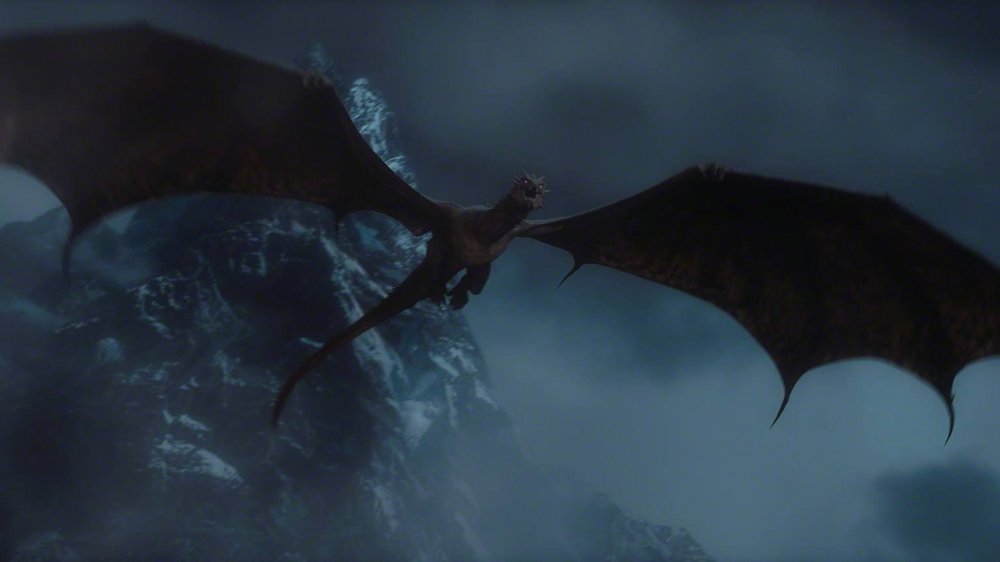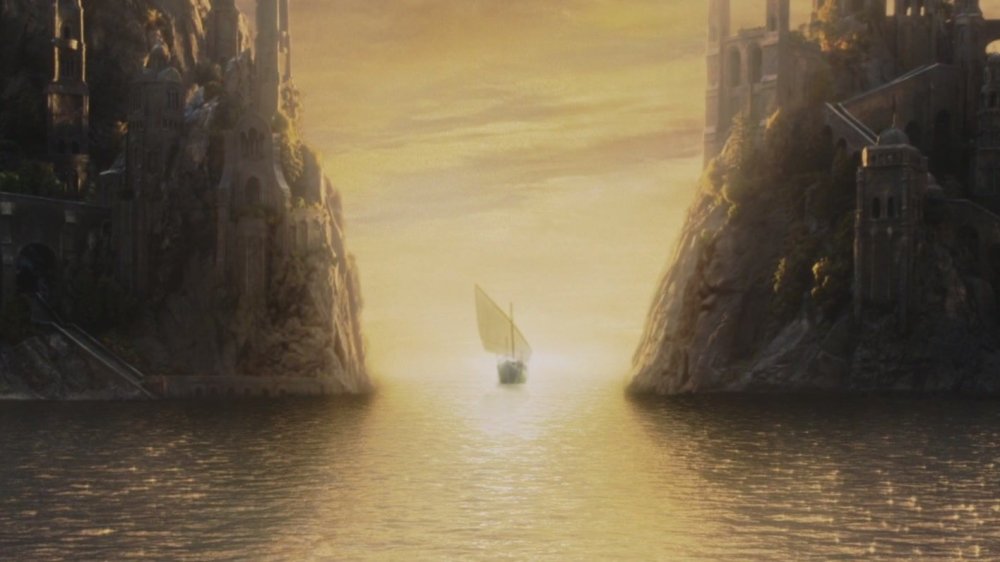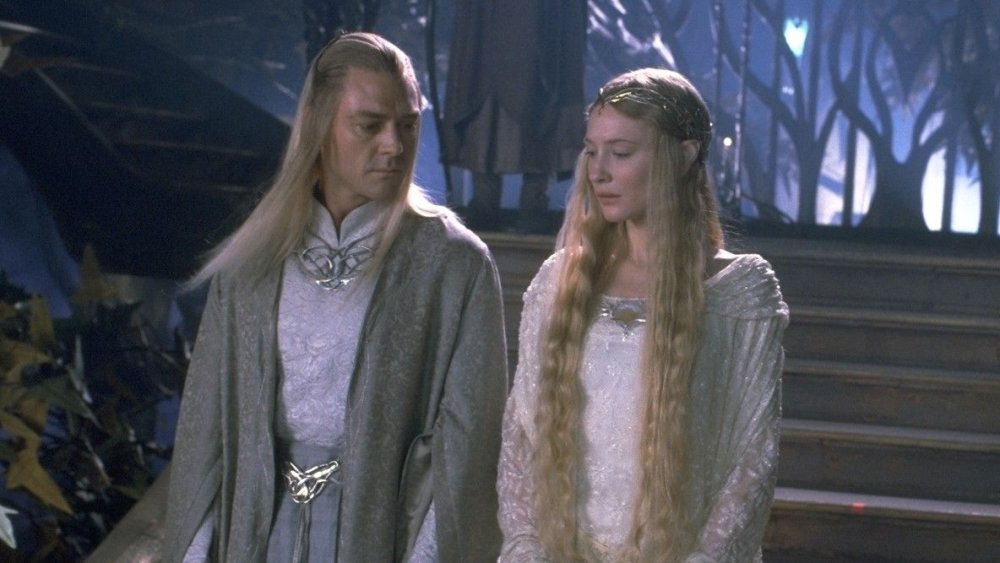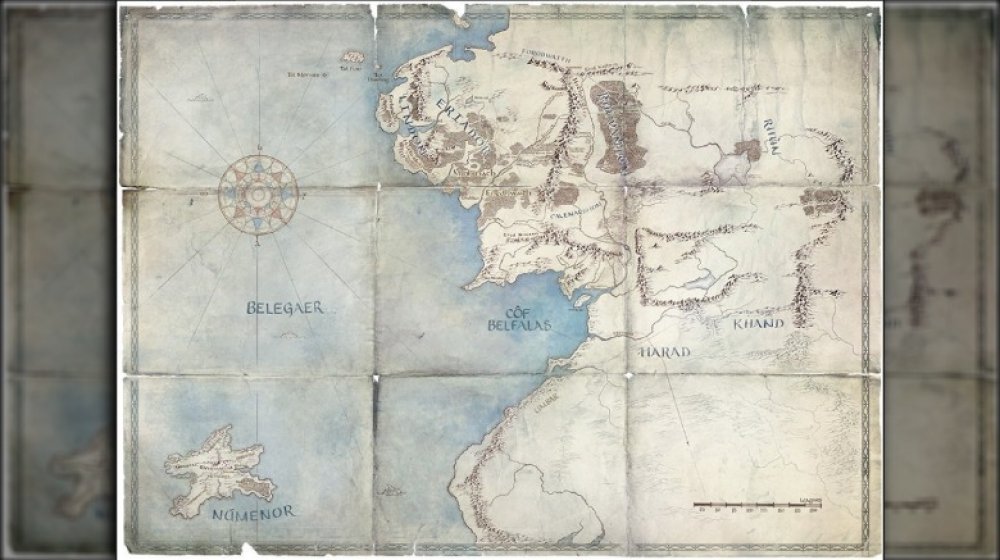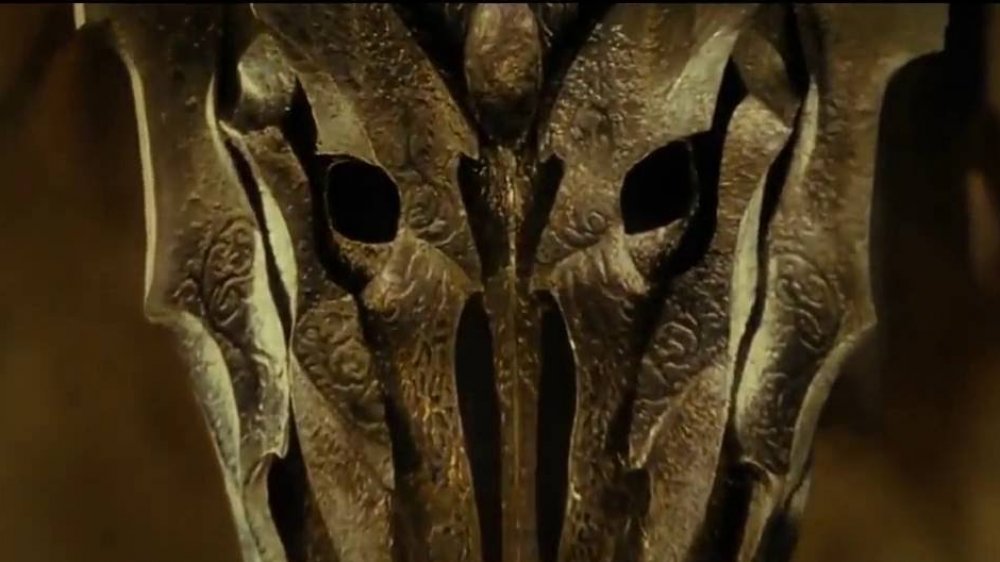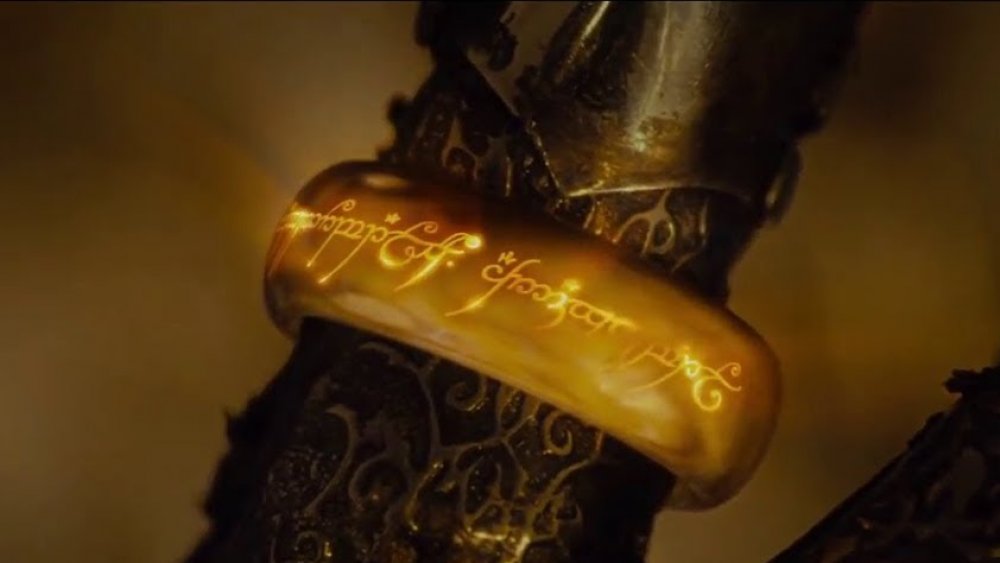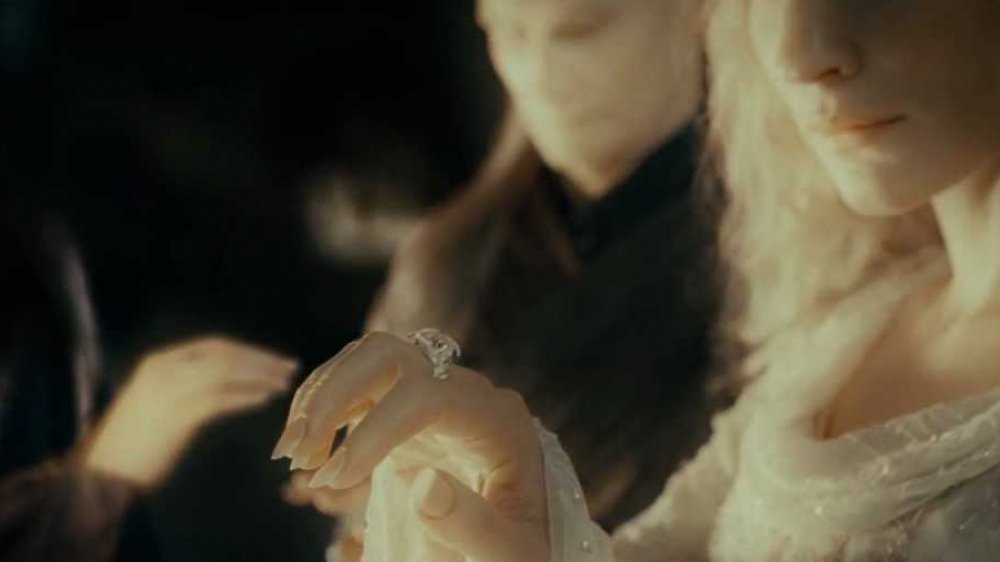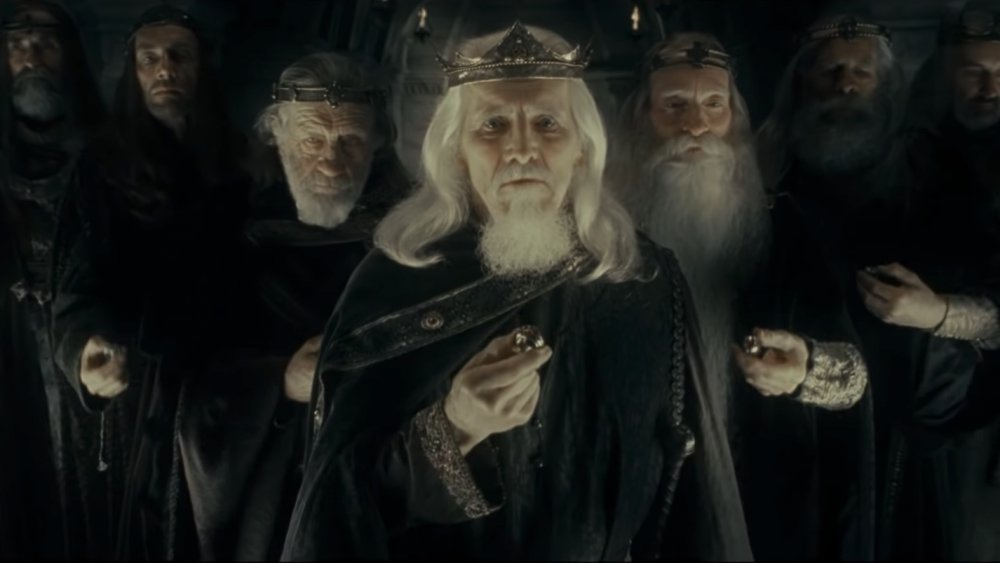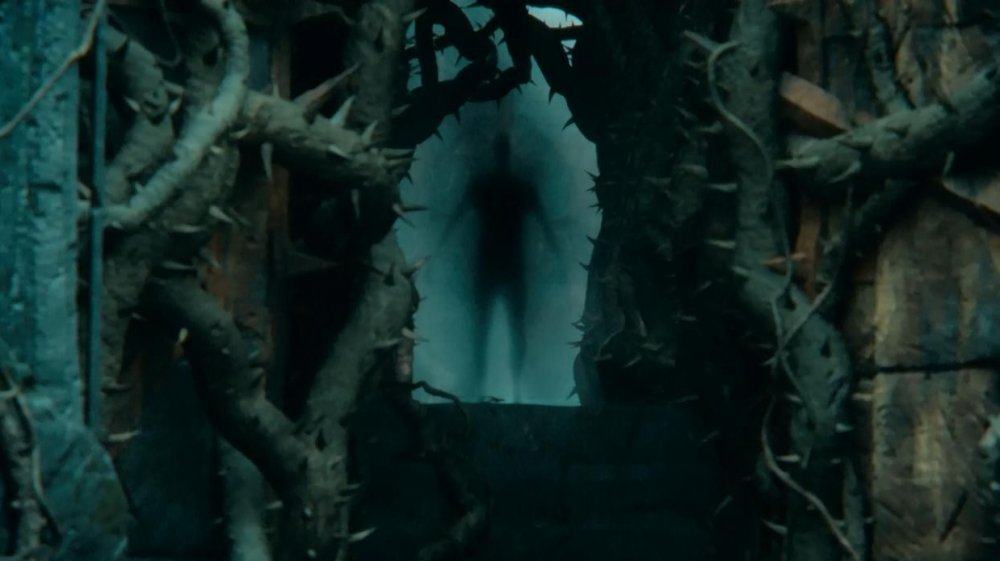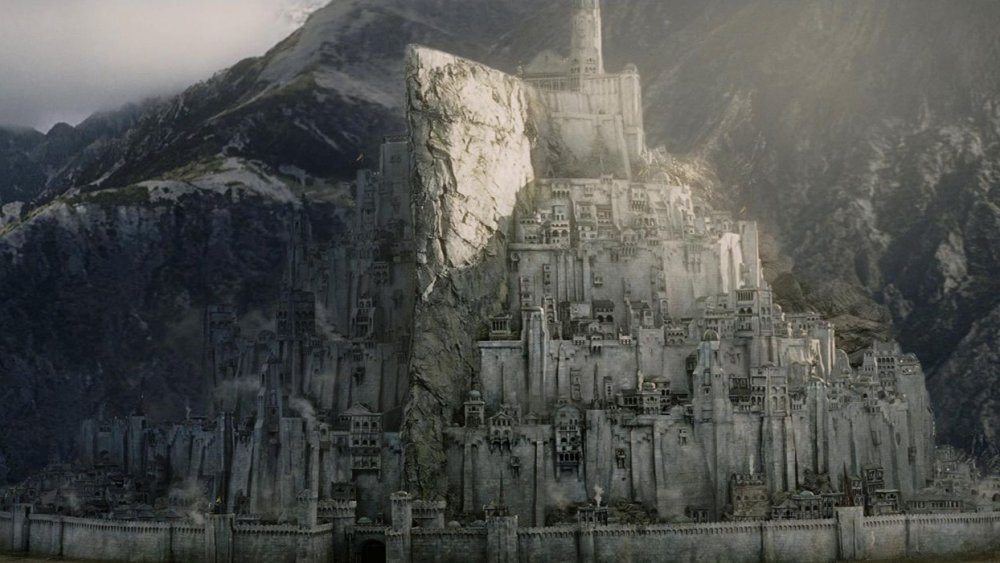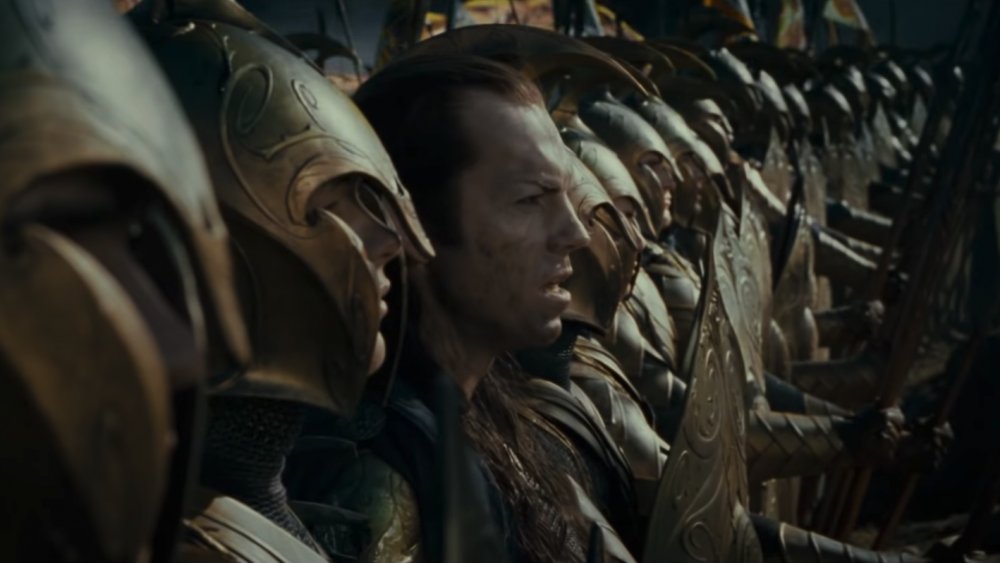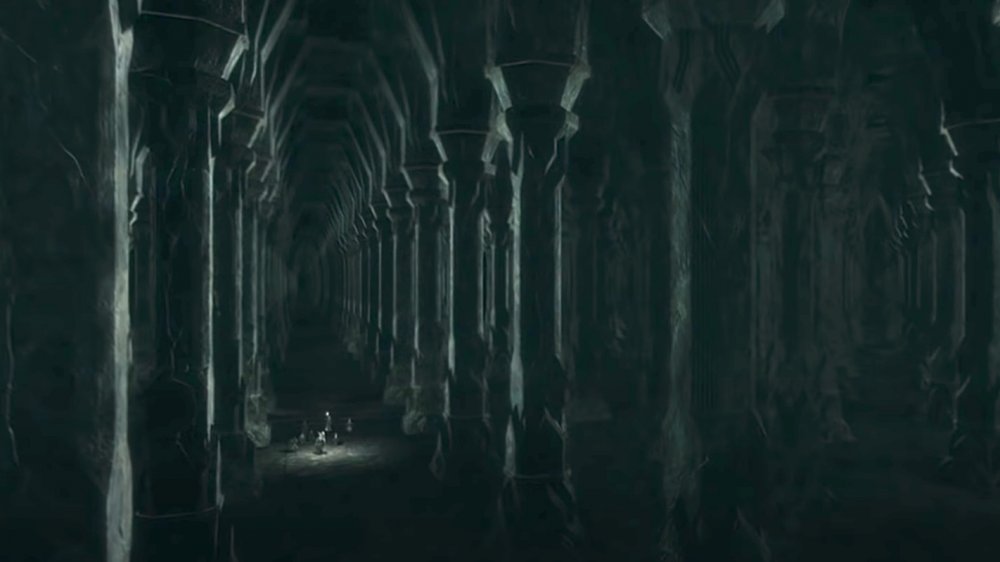Lord Of The Rings' Second Age Of Middle-Earth Explained
There's no doubt that J.R.R. Tolkien's mythical Middle-earth is a popular setting. It's entertained the masses for decades via books, movies, artwork, and even the occasional RPG. The latest manifestation will be arriving soon enough in the form of the streaming giant Amazon's upcoming multi-season series set in Middle-earth.
There's one big catch with this latest adaptation, though. While most versions of Tolkien's world thus far have focused on his classic trilogy The Lord of the Rings or its prequel The Hobbit, Amazon is stepping further back in time. The company tipped off viewers when they released a map on their Twitter feed in early 2019 that was clearly — at least to Tolkien aficionados — from the Second Age of Middle-earth's history.
If you're wondering what the heck the "Second Age" is, you're not alone. It takes a pretty deep dive into Tolkien's other works to figure out the timeline of events. The short answer is that the Lord of the Rings and Hobbit stories primarily take place at the end of the 3,000-year Third Age; the Second Age spans roughly the 3,500 years that come before that.
So what happened during the Second Age that has led the creative minds at Amazon to head in that direction? Let's dive in.
But what about the First Age?
A "second" age implies that there was a "first" age that came before it, and Tolkien's First Age is the primary subject of his book The Silmarillion.
The book focuses on the adventures and tragedies of the elves in their epic wars with the Dark Lord Morgoth. After centuries of bloodshed, Morgoth is finally defeated in the earth-shattering War of Wrath. (Seriously, the war literally shatters the earth.) The event is action-packed, with tons of dragons, eagles, orcs, elves, men, and even a bunch of balrogs and other supernatural creatures to boot. When all is said and done, an entire continent is drowned, and the survivors on both sides flee.
Most of the elves head west to the same heavenly land that Frodo and Bilbo sail toward at the end of The Return of the King. However, a few of the elves, along with the men, dwarves, and any surviving baddies head further into Middle-earth, which is where the Second Age picks up. While Amazon won't be exploring the First Age, there's no doubt that it will be an important backdrop as the show unfolds.
Refugees
Thanks to the incredibly destructive War of Wrath, the Second Age begins with a bunch of refugees looking for new homes. While there are too many stories of settling here and kingdom building there to list them all out in detail, a few of these new settlements are worth noting.
First we have Mithlond, a port settled by elves in the first year of the Second Age. The harbor is located on the northwestern shores of the continent and it becomes Middle-earth's primary connection to the forgotten west. Fans of the Peter Jackson films will recognize Mithlond by its more commonly known title of the Grey Havens. If that rings a bell, it's because this is the same spot where Frodo and Bilbo eventually head out to sea in ring-bearing retirement.
Almost 1700 years after the Grey Havens is built, the Elvish stronghold of Rivendell is founded by everyone's favorite counselor, Elrond. This time the settling takes place as a necessity after Elrond has after a nasty run-in with Sauron — more on him in a bit. Also known as Imladris and the Last Homely House East of the Sea, Rivendell will stand as one of the chief bastions of protection for the Free People of Middle-earth throughout the rest of the Second and Third ages, and it will go on to feature prominently in the Lord of the Rings and Hobbit stories.
Galadriel and Celeborn find a new home
One of the first casting leaks for Amazon's series was Morfydd Clark, who was slated to play a younger version of the Elven lady Galadriel. This brings up the intriguing question of what Galadriel was up to several thousand years before she shows Frodo her mirror and spazzes out when he offers her the One Ring.
While she may look young — she's immortal, after all — Galadriel is actually one of the oldest beings in all of Middle-earth. By the time of the Second Age, she's already thousands of years old and married to her husband, Celeborn. The lord and lady bounce around, living with various Elvish communities throughout the entire Second Age.
While the specifics of their story can get a bit confusing, eventually, they cross the Misty Mountains and relocate to Lothlorien, but not as its rulers — not yet, anyway. The elvish power couple continues to have a heavy influence on the affairs of the age, and Galadriel is eventually given her elven ring, which she uses to keep her new home safe and prosperous. At some point, she also gives birth to their daughter Celebrían, who becomes the wife of Elrond and the mother of Arwen. While Galadriel and Celeborn's time to truly shine won't come until the Third Age, there's no doubt they're some of the primary movers and shakers of the Second Age as well.
A kingdom in the midst of the sea
So far we've mostly talked about Elvish events, but the Second Age is actually mostly focused on the affairs of men. While men had been around for quite a while by this point, there's one kingdom of men in particular that really defines the Second Age: the island nation of Númenor.
After the destructive War of Wrath, the Valar, the guardian spirits of Middle-earth, raise a giant, star-shaped island out of the ocean as a gift to the men who fought against Morgoth. The island and the nation of men that eventually settle on it come to define the Second Age. In fact, it is the presence of this island on the map that initially tipped readers off to Amazon's plans for the timing of the story.
The first men to settle on the island are led by their king Elros, the brother of Elrond. Due to some very convoluted family history, the two brothers and their children are given the choice to live out their lives as either immortal elves or mortal men. While Elrond becomes an immortal elvish lord, Elros becomes the first very mortal king of Númenor, where he rules for a little over four hundred years. Throughout the Second Age, the island nation remains a force to be reckoned with and a central part of Tolkien's narrative.
Stepping into command
At the end of the First Age, the Dark Lord Morgoth is permanently banished from Middle-earth. However, many of his servants survive, including the balrog that fights Gandalf in Moria... and Sauron. The evil spirit that would eventually become the Lord of the Rings was the second in command under the Dark Lord during the First Age, and after Morgoth is banished, Sauron himself becomes the Dark Lord.
Stepping into the power vacuum left by his master, Sauron becomes the main enemy for the entire Second and Third Ages. Roughly a thousand years into the Second Age he establishes Mordor as his chief base of operations and begins making plans to cause some trouble. However, we're not talking about Sauron the flaming eyeball here, nor are we talking about a towering dude in black armor. At this point in history, Sauron still looks pretty darn good. Rather than attacking his elvish enemies, the Dark Lord capitalizes on his still-attractive physical form, calls himself Annatar, the Lord of Gifts, and begins pretending to offer his friendship to any elves that would listen to him this side of the Misty Mountains.
The Lord of the Rings
Sauron — er, Annatar — spends the next few centuries worming his way into the affections of the elves of Middle-earth. While a few of the elvish lords, like Elrond and Galadriel, don't trust him — even if they can't figure out who he is — most of the rest of the elves do. As far as they're concerned, this "Lord of Gifts" just showed up from out of nowhere and started bestowing his incredible knowledge on everyone. What's not to love?
One group of elves, the same one that lives near the Dwarves in Khazad-dûm, becomes particularly enchanted by the Dark Lord in disguise. They're led by a fellow named Celebrimbor, and they're famous for being incredible craftsmen. With Annatar's help, they begin to learn how to forge rings of power. Yes, those rings of power.
It's at this point that Sauron secretly forges the One Ring. He pours a ton of his power into the ring in order to use it to control the other rings. When he puts the One Ring on, though, the elves instantly realize that they've been duped and take their rings off in order to avoid his domination. Angry at the fact that his ring gave him away before he was ready, Sauron prepares to subdue the elves the old-fashioned way — with a war.
The Dark Lord of Mordor
Once Sauron's real intentions are revealed, he demands the other rings of power, claiming that the elves never would have been able to make them without his help — which is technically true, with the exception of the three elven rings. Of course, feeling betrayed, the elves refuse to hand any of their powerful jewelry over.
With his pretext for war in hand, Sauron attacks the Free People of Middle-earth in a bloody war that lasts for several years and nearly leads to the villain's total domination of the bulk of the continent. Initially, Celebrimbor and his people are destroyed, the Dwarves retreat to Moria, and Elrond flees north to found Rivendell. The Dark Lord also captures the seven rings that eventually would go to the Dwarves and the nine rings that would eventually be given to the Black Riders. Critically, the three elven rings remain hidden.
Just as Sauron is preparing to do a victory lap through Middle-earth, who should arrive on the scene but the Númenorians. That's right, the nation of men that had been living on the star-shaped island out in the middle of the ocean suddenly arrive and utterly rout Sauron, sending the Dark Lord scampering back to Mordor with little more than a bodyguard. This saves the elves, men, and dwarves from total destruction. Over the next several centuries, the Númenorians and Sauron continue to build up their strength and jockey for power in Middle-earth.
Your humble servant
Sauron spends the next millennia rebuilding his strength. He completes his tower of Barad-dûr — the one where he lives later when he's a flaming eye — distributes the rings of power, and sets up the Black Riders as his terrifying new servants. He continues to dominate practically everything in sight with the crucial exception of the elven kingdoms he failed to conquer and a few strong but scattered settlements of the Númenorians along the coast of Middle-earth.
Eventually, Sauron declares that he is the King of Men, a move that is insulting to the very manly, certainly unconquered Númenorians. The Númenorian king Ar-Pharazôn the Golden invades Middle-earth with such a resplendent army that Sauron's minions abandon him without a fight.
At this point, Sauron surrenders. Wait, what? That's right. Sauron, who still looks like the attractive Annatar, willingly surrenders to the Númenorians and becomes their hostage. This may come across as a cowardly move on the surface, but it ultimately spells doom for the Númenorians. They bring the Dark Lord back to their island nation, and it doesn't take long before the prisoner begins working his bewitchments on the king himself.
Destroyer of Númenor
While Sauron arrives on Númenor as a prisoner, it doesn't take long before the scoundrel becomes so liked by the king that he's promoted to be one of his advisors. Once in a position of power, Sauron begins convincing the king's subjects to worship Morgoth, complete with human sacrifices.
Sauron ultimately convinces the king of Númenor to attack the Valar in their land far to the West in a delusional attempt to gain immortality. This is clearly an issue, and it becomes one of the rare cases in Middle-earth history when the supreme God, Eru Ilúvatar, himself comes down to intervene.
Eru destroys the rebellious king's armada of ships and sinks the insurgent island in an Atlantis-like catastrophe. Interestingly, it's at this point in Tolkien's mythology that the Earth is literally reshaped from a flat plain to a round sphere. Sauron himself is caught in the chaos and, while his spirit survives and heads back to Middle-earth, his body is destroyed.
Gondor and Arnor
At this point, we're just over 3,200 years into the Second Age, with only 250 to go. This last two and a half of centuries focus on the founding of two important kingdoms, one of which any Lord of the Rings fan should recognize. We're talking about Arnor and Gondor, two kingdoms founded by a group of faithful Númenorians who rejected Sauron's silver-tongued lies and survived the destruction of their home by sailing away before the catastrophic chaos erupted.
When they arrive in Middle-earth, they join forces with the Elves and settle down to a new life. These are the same people that build, among many other things, Saruman's tower of Orthanc, the city of Minas Tirith, and the tower at Weathertop where Frodo is stabbed by the Black Rider. They also bring with them the White Tree that can be seen in The Return of the King as well as the Palantir, the shiny seeing stone that Saruman uses to chat with Sauron.
Everything looks hunky-dory for the two new kingdoms... until Sauron shows up in Middle-earth again.
The Last Alliance
When they realize that Sauron has returned to Mordor, the exiled Númenorians name the fiery mountain in his land Mount Doom — yes, that Mount Doom. Not long after this, Sauron begins attacking his enemies yet again, and the elves, men, dwarves, and all other free peoples in Middle-earth join together to form the Last Alliance.
Whether they know it or not, fans of Peter Jackson's trilogy are actually quite familiar with the Last Alliance. In fact, it's one of the first things shown in the films. The initial sequence in The Fellowship of the Ring centers on the war in which Sauron is destroyed, the ring is cut from his finger, and Isildur tragically refuses to destroy it in the fires of Mount Doom.
These moments at the beginning of the monumental Jackson trilogy mark the end of the Second Age. Not only does the era dovetail neatly with the existing cinematic source material, but it leaves a massive helping of epic stories for the folks at Amazon to dig into as the showrunners write, the cameras roll, and the studio prepares to get their new streaming series off the ground and running.
The Dwarves and Khazad-dûm
The Second Age narrative tends to revolve mostly around Elves, Men, and their ongoing wars with Sauron. However, it's also one of the most prosperous eras in all of Dwarven history. The primary Dwarven city in Middle-earth at this time is Khazad-dûm — or Moria as it's called later on. At this point, though, there isn't a balrog haunting the mines yet and the subterranean city is alive with Dwarven life and activity. In addition, the city becomes even more rich and famous after many talented Dwarves from the eastern Dwarven mansions flee west at the end of the First Age.
During the Second Age, the Dwarves strike up a particularly friendly relationship with a neighboring group of Elves that live right next to their western gates (these are the same gates that the Fellowship of the Ring will later use to enter the mines after they "speak, friend, and enter.") These are the same Elves that end up making the Great Rings of Power that the One Ring is designed to control, and the two highly skilled races get along swimmingly for a long time.
Eventually, when this kingdom of Elves is attacked by Sauron (more on that further down), the Dwarves will try to help their friends. Unfortunately, they come too little and too late and end up retreating and locking themselves up in Khazad-dûm, where they stay out of most of the rest of the major events of the age.
